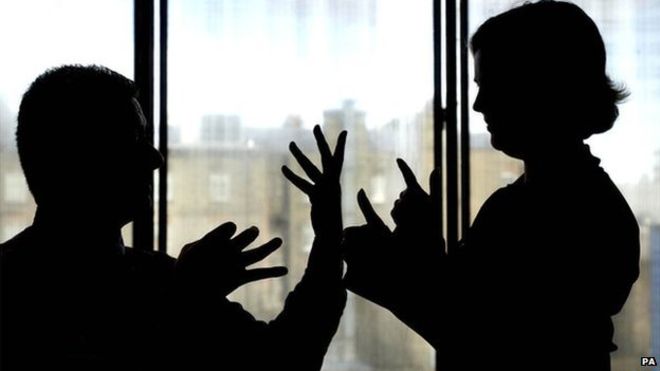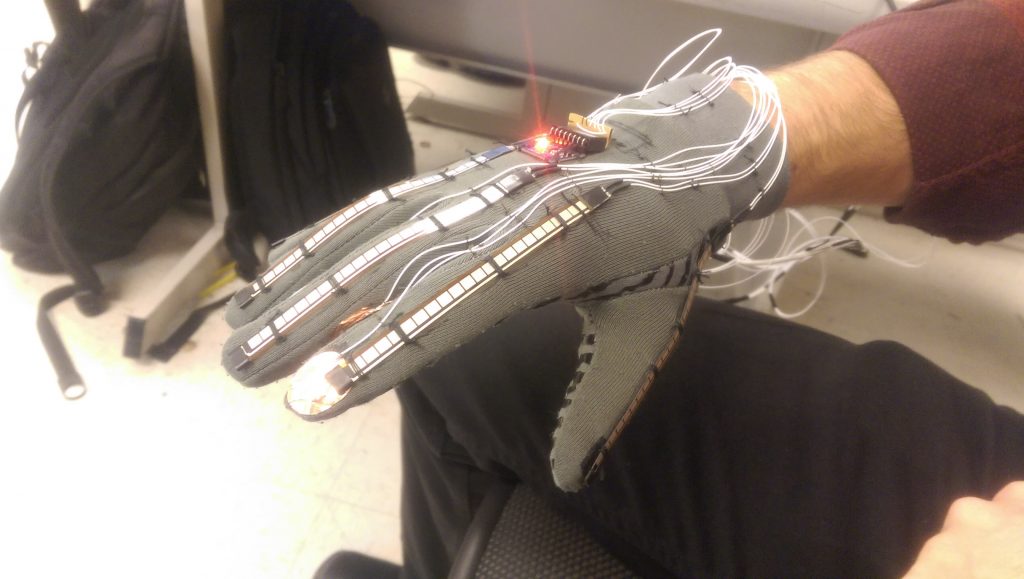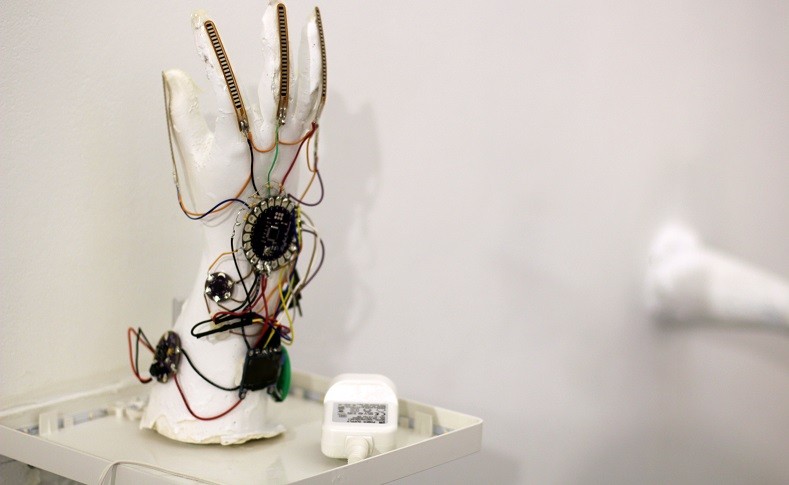
From Motionsavvy, a company founded by students from the Rochester Institute of Technology’s National Technical Institute for the Deaf, they designed the aptly-named SignLanguageGlove to translate sign language into spoken or written words. They will blow your mind.
Let me confess, wearables promise much. I’ll take some of the blame for that. Those of use who write about them get excited about every idea. It’s true, wearables may someday (soon) breakdown the barriers of communication.
That said, we already have wireless headphones with machine learning abilities. How far away are we from a universal translator? It’s as much a matter of processing speed and battery power as anything. Once we can make super tiny powerful batteries and super tiny powerful processors, fuggedaboutit.
Meanwhile, we’ll be able to understand folks who can’t speak but wear these SignLanguageGloves. There’s one thing: they’re not yet available.
The Lofty Goal

(source: buzzworthy.com)
Hadeel Ayoub has her Master’s of computation Arts. When she started this project, her goal was to better-facilitate communication between people of different abilities.
There’s a gap where people who communicate only through sign language cannot connect with most people. For most of us, unless we know someone who speaks sign language, it’s a novelty language.
The communication barrier is rare, but thick when people find it. Ayoub’s goal is to eliminate that barrier.
The Glove

(source: people.ece.cornell.edu)
Like the GloveOne, designed for VR, the SignLanguageGlove recognizes hand motions. There are five fingers on the glove, like a hand. Traveling the length of each finger are sensors, which communicate with a board.
The latest version comes with a display, but a future version may work with a smartphone screen. More on that in a bit.
The glove can translate hand movements into letters and words, not much differently than text translators work. They aren’t perfect, but they can translate most things. They also get better over time.
The Four Versions

(source: fashnerd.com)
The first version was a proof of concept. That prototype won Ayoub an Innovation price in 2015.
Her second prototype she designed to work faster than the first, to be more durable, more efficient. The parts were smaller, the software smarter. There was a screen she could navigate by scrolling.
In the 3rd version, she added a text-to-speech chip and tried to make the design more user-friendly. Until then it had a bunch of wires sticking out, which she saw as intimidating.
The fourth version, still in development, will continue to refine the look and feel of the 3rd, adding the ability to connect with a smartphone or tablet. That version will go into production.
The Realistic Future

(source: mezmalz.com)
The goal for Ayoub is to continue to refine her idea, eventually making one small enough to fit a child’s hands. (This is where I start dreaming.)
It’s easy to imagine that over time the parts of such a device could get small enough to ditch the glove altogether. We already have motion sensing devices, have had them for years.
In time, Ayoub could replace the glove with a wrist-worn wearable device that tracks hand movement (A la Leap Motion?). If she doesn’t, someone else will.
The great thing about the wearables market is, despite some of the doomsday articles you may read on the state of affairs, these devices give chase to dreams. We imagine a world of the future where our lives are so much easier for having wearables in them.
Ayoub understands this. She’s part of that vision.
Source: Fashnerd